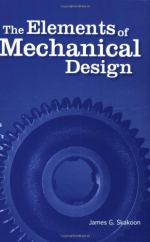Tab Article
From one of the authors of The Unwritten Laws of Engineering and The Unwritten Laws of Business, this concise and readable book is an excellent primer or refresher for any professional interested in the basic principles and practices of good mechanical design.
In this handy and unique volume the author uses his own experience, along with input from other expert designers, to explicitly state design principles and practices. Readers will not have to discover these principles on their own and will be able to apply these fundamental concepts throughout their designs.


